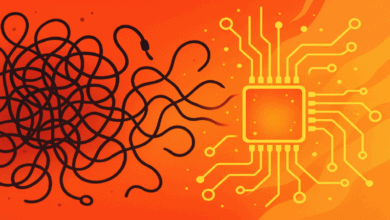Clay & Gong: The Secret to ABM Success

▼ Summary
– Most ABM programs rely on static, generic data, limiting their effectiveness despite marketers’ efforts to personalize campaigns.
– The integration of Clay and Gong enables marketers to extract and operationalize rich conversation insights from sales calls for hyper-targeted ABM campaigns.
– Traditional ABM struggles with data quality and relevance, often targeting accounts based on assumptions rather than real buyer insights.
– The Clay-Gong integration analyzes call transcripts to identify key insights, automate follow-ups, and find lookalike accounts with similar pain points.
– AI-driven ABM based on actual customer conversations provides a competitive edge by personalizing campaigns to real needs, not demographic stereotypes.
Most ABM strategies rely on outdated data and broad assumptions, leaving marketers stuck in a cycle of generic personalization. The real game-changer lies in tapping into the goldmine of insights already captured in sales conversations, details most companies overlook. The recent integration between Clay and Gong unlocks this potential, transforming how businesses approach account-based marketing by leveraging actual customer discussions to drive hyper-targeted campaigns.
Traditional ABM often misses the mark because it depends on surface-level data rather than real buyer insights. While intent signals and firmographics provide some direction, they lack the depth of firsthand knowledge gathered in sales calls. Research shows that while 97% of marketers see higher ROI with ABM, nearly half struggle with siloed data that prevents true personalization. Meanwhile, sales teams hear directly from prospects about pain points, budgets, and competitive concerns, information that rarely makes its way into marketing strategies.
The Clay-Gong integration bridges this gap by extracting and analyzing sales call transcripts at scale. Instead of guessing what accounts care about, marketers can now:
- Pull detailed Gong call transcripts and analyze them with AI to pinpoint key challenges, competitor mentions, and budget discussions.
- Automatically update CRM records with these insights, ensuring sales and marketing teams work from the same intelligence.
- Identify lookalike accounts that share similar characteristics, expanding reach with precision.
This approach moves beyond static ABM by turning conversations into actionable triggers. For example, if a prospect mentions a competitor during a call, the system can automatically send battle cards or schedule a competitive demo. If budget discussions arise, ROI-focused content can be triggered instantly.
Three strategic frameworks help maximize this integration:
- Extract call transcripts → Analyze for pain points → Map insights to accounts → Target lookalikes with proven messaging.
- Launch dynamic sequences based on real-time conversation cues, like competitor mentions or budget approvals.
- Use call insights to map buying committees and engage multiple stakeholders with role-specific content.
The future of ABM isn’t just better targeting, it’s building campaigns around what customers explicitly say they need. By grounding strategies in actual conversations, businesses gain an edge over competitors still relying on demographic stereotypes. The Clay-Gong integration marks a shift toward AI-driven ABM, where insights from sales discussions fuel smarter, more relevant marketing at scale.
Organizations that adopt this approach won’t just personalize, they’ll resonate. While others guess based on outdated data, forward-thinking teams will craft messages that speak directly to prospects’ stated challenges and priorities. This isn’t just evolution; it’s a revolution in how ABM delivers real results.
(Source: MarTech)





